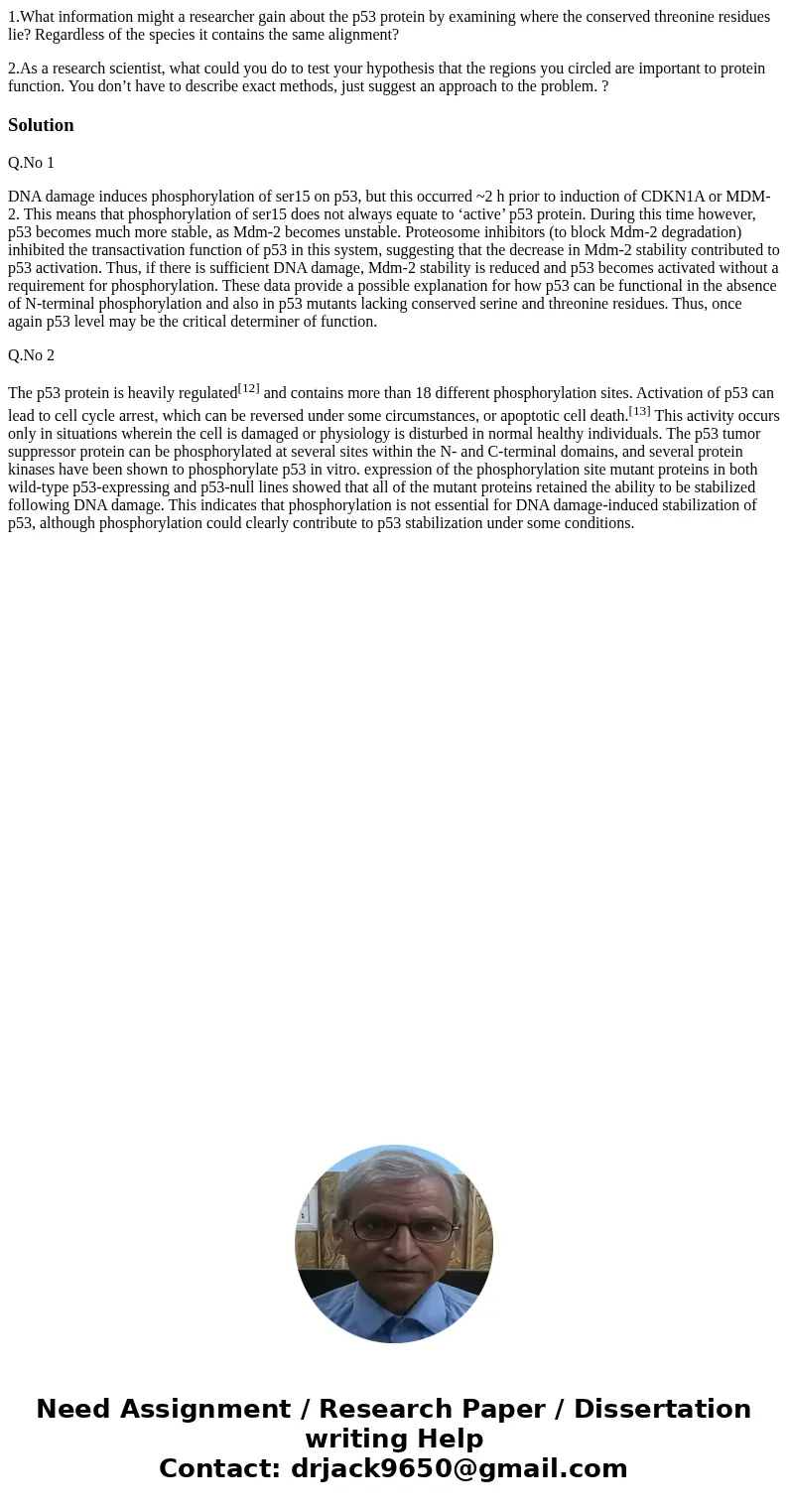1What information might a researcher gain about the p53 prot
1.What information might a researcher gain about the p53 protein by examining where the conserved threonine residues lie? Regardless of the species it contains the same alignment?
2.As a research scientist, what could you do to test your hypothesis that the regions you circled are important to protein function. You don’t have to describe exact methods, just suggest an approach to the problem. ?
Solution
Q.No 1
DNA damage induces phosphorylation of ser15 on p53, but this occurred ~2 h prior to induction of CDKN1A or MDM-2. This means that phosphorylation of ser15 does not always equate to ‘active’ p53 protein. During this time however, p53 becomes much more stable, as Mdm-2 becomes unstable. Proteosome inhibitors (to block Mdm-2 degradation) inhibited the transactivation function of p53 in this system, suggesting that the decrease in Mdm-2 stability contributed to p53 activation. Thus, if there is sufficient DNA damage, Mdm-2 stability is reduced and p53 becomes activated without a requirement for phosphorylation. These data provide a possible explanation for how p53 can be functional in the absence of N-terminal phosphorylation and also in p53 mutants lacking conserved serine and threonine residues. Thus, once again p53 level may be the critical determiner of function.
Q.No 2
The p53 protein is heavily regulated[12] and contains more than 18 different phosphorylation sites. Activation of p53 can lead to cell cycle arrest, which can be reversed under some circumstances, or apoptotic cell death.[13] This activity occurs only in situations wherein the cell is damaged or physiology is disturbed in normal healthy individuals. The p53 tumor suppressor protein can be phosphorylated at several sites within the N- and C-terminal domains, and several protein kinases have been shown to phosphorylate p53 in vitro. expression of the phosphorylation site mutant proteins in both wild-type p53-expressing and p53-null lines showed that all of the mutant proteins retained the ability to be stabilized following DNA damage. This indicates that phosphorylation is not essential for DNA damage-induced stabilization of p53, although phosphorylation could clearly contribute to p53 stabilization under some conditions.

 Homework Sourse
Homework Sourse